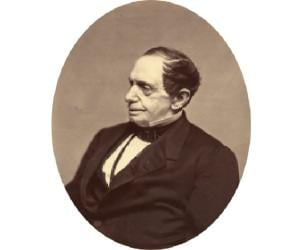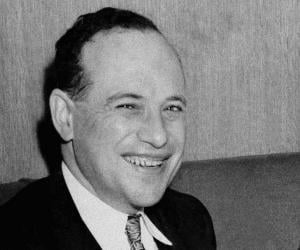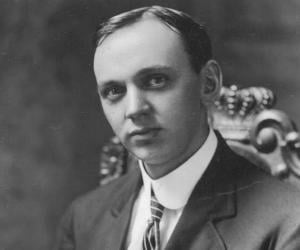Early Life
Details of Tituba’s early life are not very clear. Records state that she was born in an Arawak tribe village of Venezuela in South America and was captured from her village during her childhood. Later she was taken to Barbados to be sold.
In 1680, Samuel Parris (or his representative) bought her in Barbados and brought her (and two more slaves), to Boston/New England. She was a teenage girl then and served the Parris family. Samuel Parris was a rich businessman who had inherited sugar plantations in Barbados. In November, 1689, he was appointed as the new minister of Salem village.
Parris moved to the village with his family, and also took his slaves along. He had another slave named John, said to be a Native Indian. It is said Tituba and John were married. Tituba looked after Parris’ 9-year-old daughter Elizabeth or Betty Parris, and his 11-year-old niece Abigail Williams.
Continue Reading Below
The Salem Witch Trials
In February 1692, the villagers of Salem started complaining of fits, pains and convulsions. It began with Betty Parris and her cousin Abigail Williams. Their friends, Ann Putnam and Elizabeth Hubbard, also complained of having odd visions and hallucinations. It is said that at that time, Tituba and John along with a neighbor, Mary Sibley, baked a witch-cake. (A witch-cake is made by mixing rye meal with afflicted girls’ urine). They fed it to the dog, in the hope that it would reveal the name of the person causing trouble. But instead, the girls’ symptoms worsened.
Rev. Parris called a doctor, but the doctor could not find any medical cause; he suggested that it could be due to a supernatural source. Thus, the girls were diagnosed as targets of witchcraft. Other villagers also complained of fits, bites and pinches.
This brought on a wave of panic and hysteria, which spread through Salem and the nearby towns. One of the four girls admitted to her involvement in fortune-telling. Hunt was on for the witch who could have cast a spell on the girls and the villagers. Tituba was the first suspect as she used to be with the Parris girls for most of the times, and the girls reported that she told them stories about occult rituals. She was accused of practicing ‘voodoo’ and also of baking a witch-cake.
After being asked by Parris, Tituba admitted that she had knowledge of occult practices, which were taught by her Barbados mistress. However, she clarified that the techniques were only to ward off evil powers and not to cause any harm, so she wasn’t a witch. She added that she had made the witch-cake only to help Betty Parris.
The afflicted girls indicted two more women – a destitute and mentally unstable woman Sarah Good, and an old widow Sarah Osborn, who often had disagreements with the Parris’ family. Tituba and the two women were brought to the court on March 1, 1692, under the charges of witchcraft.
Initially, all three of them denied the charges, but later Tituba confessed to practicing witchcraft. She was questioned by Salem town justice John Hathorne. In her confession she described a tall, white haired man in dark coat who travelled from Boston with his minions. She said that he had come to her and ordered her to cause harm to the girls. She was threatened with death if she didn’t obey, she testified. With this description she confessed how the devil had come to her and bid her to serve him.
Tituba further described her encounters with devil’s minions who had appeared in the form of various strange animals, such as evil hogs, black dogs, red cats and black cats, and other creatures, and had ordered her to hurt the children. She also spoke of flying on a pole with the other two accused, and described those two getting transformed into strange, winged creatures.
Tituba’s descriptions and implications of the other two sparked off hysteria in Salem. When she hinted that the devil had a book full of more names who he had ordered to do his bidding, the people of Salem panicked and a massive witch hunt, known in the history as the ‘Salem Witch Hunt,’ began in the pursuit of all possible suspects. She would be very specific while describing the creatures, but she would answer vaguely while specifying names of the suspects or stating whether she had seen the Devil’s book. Within months, nearly 185 witches and wizards were named as suspects. They were subjected to torture, stoning, drowning and hanging. Altogether 150 people were imprisoned and 19 were executed by the Salem authorities.
As Tituba was considered important for the trial, she was only imprisoned. She was not tried and her confession saved her from the death penalty. The trials of the other imprisoned suspected witches continued and later Tituba retracted her confession, stating that she had confessed only because she was beaten by Parris and was forced to confess.
Continue Reading Below
It is assumed that she was possibly aware that her confession could save her life. Later she admitted that she had lied to protect herself, but her retraction did not receive much attention amidst massive witch hunt and their trials.
Finally, she was not indicted in the case and the ‘Grand Jury’ wrote a remark, ‘Ignoramus,’ as she was found ‘not guilty’ due to the lack of evidence. There are different versions regarding what happened to her after the trial. Some reports say that she and her husband were sold to an unknown person, while others state that she was released, but further details are not known.
According to the modern science, it is believed that the Parris girls suffered fits and convulsions due to contaminated rye floor. The lack of knowledge of microbial contamination at that time, led to the notion of witchcraft.
Although Tituba disappeared after the trials, she still lives through various fictional accounts. Prominent among these are the 1953 Arthur Miller play, ‘The Crucible,’ and Ann Petry’s novel for children, ‘Tituba of Salem Village.’ Tituba’s character appeared in the 2013 WGN series ‘Salem,’ and also in the series ‘American Horror Story: Coven.’
Facts About Tituba
Tituba was a woman of Caribbean descent who played a significant role in the Salem witch trials, as she was one of the first to be accused of witchcraft.
She was known for her knowledge of herbal remedies and folk magic, which some believe may have contributed to the accusations against her.
Tituba was eventually imprisoned during the trials but was later released and her ultimate fate remains unknown.
Some historians believe that Tituba may have been a slave, while others suggest she was an indigenous woman from South America.
Despite the mystery surrounding her life and background, Tituba's story has continued to capture the interest of scholars and storytellers alike.









